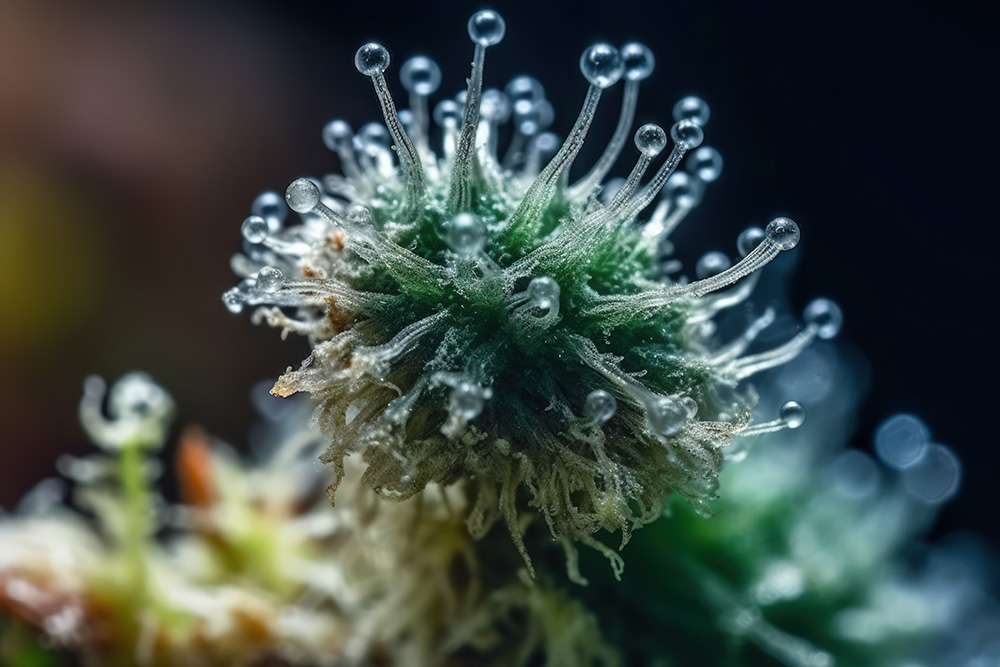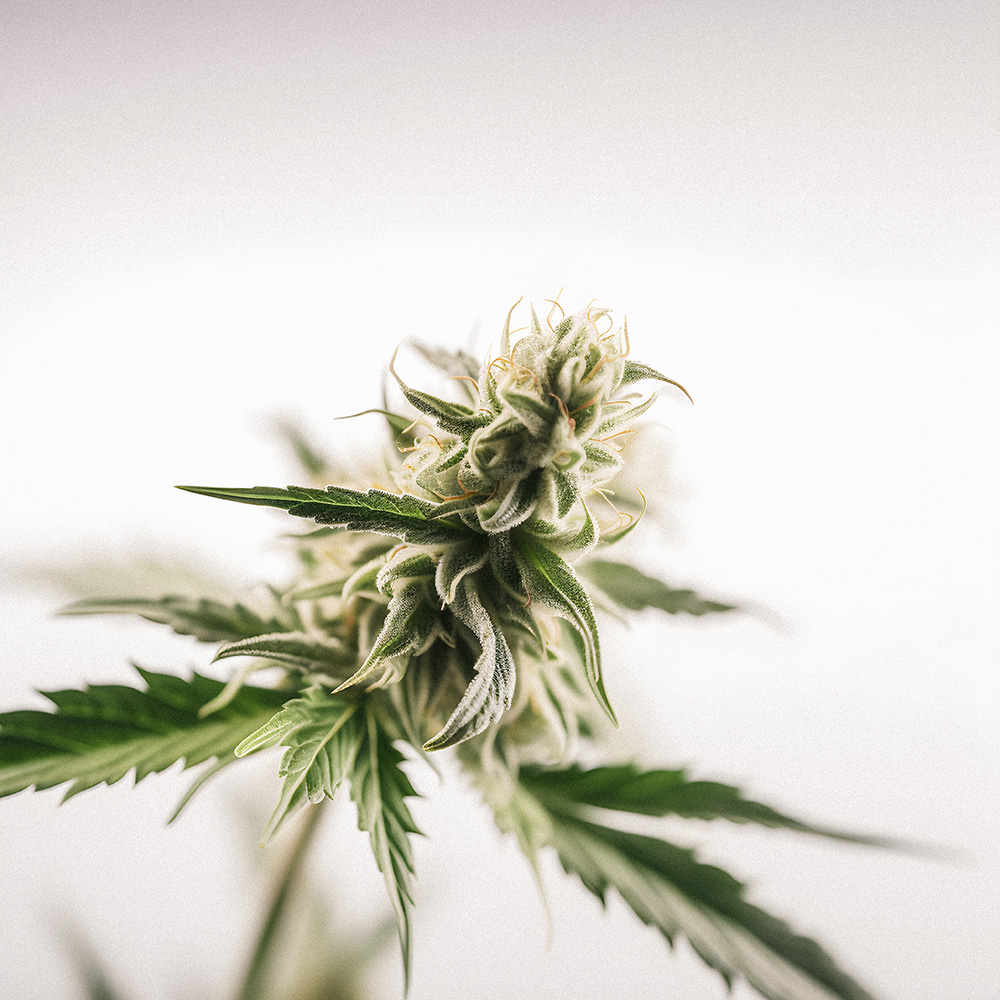Green Notes: The Role of Terpenes in the Cannabis Experience
By Dario Sabaghi
The experience of cannabis isn’t one that can be reduced simply to THC and CBD. The plant contains myriad compounds that make it unique. Even when you add in all of the phytocannabinoids like Delta 8, Delta 10, HHC, THCV, CBDV, etc., you still haven’t captured the whole picture.
Take the scent of cannabis, for example. To untrained nostrils, all cannabis smells the same. But in reality, it doesn’t. There’s a world of nuance waiting to be discovered that will blow the mind of the most obnoxious of wine snobs—and it’s all thanks to the terpenes. If you’ve been in this space for more than a minute, you’ve heard the term and are no doubt familiar, let’s dig in—expand that familiarity into a working knowledge.
Terpenes are chemical compounds that naturally occur in plants, as well as some animals, and are responsible for the smell associated with various types of vegetation.
In the context of cannabis, terpenes are responsible for the distinct aromas and flavors that set specific strains apart from one another. Like other cannabis compounds, terpenes can be found in trichomes. Virtually invisible to the naked eye, trichomes can be photographed with a macro lens.

Trichomes are tiny, glistening crystalline glands that emit fragrance, act as a deterrent and offer protection. These resinous glands on cannabis flowers house the plant’s cannabinoids, terpenes, and other compounds. Strains heavily coated with trichomes tend to contain higher levels of cannabinoids and terpenes.
It’s not clear how many cannabis terpenes are there. More than 100 terpenes and terpenoids (which are terpenes that have been altered to include extra functional groups, typically those containing oxygen) have been identified in cannabis so far, each with distinct characteristics and potential therapeutic uses.
Cannabinoids may be the primary engine that drives the therapeutic effects of the plant, but terpenes are believed to steer the experience, as well as have their own therapeutic properties.. It’s also worth noting that these terpenes can also be found in plants outside the cannabis genus.
For example, Myrcene, the most prevalent terpene in cannabis, is recognized for its calming and muscle-relaxing properties. It’s also present in hops, contributing to the aromatic profile of beer. Limonene, a citrusy terpene, exhibits antidepressant and anxiety-reducing effects and is found in citrus fruit rinds like lemons and oranges. Pinene, a pine-scented terpene present in various plants, including cannabis, possesses anti-inflammatory and bronchodilatory properties. Linalool, a floral terpene found in lavender, offers sedative and anxiety-reducing effects, while Caryophyllene, a spicy terpene found in black pepper, demonstrates anti-inflammatory qualities.
Cannabis strains contain both primary and secondary terpenes, where primary terpenes wield significant influence over the plant’s flavor and fragrance. Secondary terpenes contribute depth to these attributes.

Beyond the ‘traditional’ classification of cannabis strains between Indica or Sativa, a categorization based on hybrid traits, including terpenes, plays a role in determining their effects. In fact, the assortment of terpenes serves as a crucial factor in defining each strain’s distinctive qualities, giving rise to a wide range of aromas, flavors, and effects.
In the human body, cannabis terpenes indirectly interact with the endocannabinoid system (ECS) through what is known as the entourage effect.
When we talk about the “entourage effect,” we’re referring to the concept that various compounds in cannabis can work together harmoniously to modify the plant’s psychoactive strength and enhance its therapeutic advantages.
Bear in mind that the study of the entourage effect is still ongoing, and more research is needed to validate this theory. Thus far studies have been contradictory.
The interaction of cannabinoids, terpenes, and flavonoids leads to distinct effects based on their specific combinations.
This interaction allows them to modulate the effects of cannabinoids, enhance therapeutic benefits, and even influence mood and emotions.
While terpenes don’t directly bind to ECS receptors, they can interact with other receptors in the body, affecting neurotransmitter levels and neural signaling.
When you consume cannabis, terpenes enter your bloodstream alongside cannabinoids and may influence the endocannabinoid system by modulating other receptors and cellular pathways.
As the ECS is a complex network that regulates functions such as mood, sleep, appetite, and pain perception, terpenes can influence these receptors, either enhancing or inhibiting their activity to produce therapeutic outcomes.
The interaction between terpenes and the endocannabinoid system requires further investigation to uncover their full therapeutic potential, as it is not yet fully understood. However, ongoing research is striving to gain a deeper understanding of these interactions and their specific mechanisms.
Cannabis consumers are already well-acquainted with CBD and THC and for many, that knowledge extends to CBN, CBG, THCV, etc. They typically view CBD as the safer, non-psychoactive component and THC as the psychoactive element, often subject to legal restrictions. However, as the cannabis consumer base becomes more discerning, the spotlight is turning to terpenes as a factor of product choice.
These terpenes are recognized as influencing product choice, and different strains can be matched to various lifestyle needs, impacting both recreational and medical cannabis use as they are considered vital to the entourage effect, which enhances the effects of cannabis.
As terpenes grow in importance, they are being prominently featured on cannabis product packaging, offering crucial information to consumers.
With the industry’s expansion, terpenes may become a decisive factor in customer purchasing decisions. To some extent, this is already and always has been the case, at least in modern times. It’s why most of us would smell cannabis before purchase, even in the illicit market.
Many cannabis enthusiasts and dispensary attendants argue that consumers often place excessive importance on THC levels when selecting a strain. Instead, they suggest that consumers should focus more on specific terpene profiles to achieve their desired effects.
Terpenes, the aromatic architects of cannabis, are pivotal to its effects and therapeutic value. As research sheds light on how they enhance the entourage effect, the cannabis narrative evolves, recognizing terpenes as essential, not peripheral. Their understanding promises a richer, more personalized cannabis journey for enthusiasts and patients alike in this burgeoning green renaissance.
Scents & Sensibilities: Profiling the Plant's Best Known Terpenes
Myrcene:
- Smell: Earthy, musky notes similar to cloves, with a hint of fruity, grape-like aroma.
- One of the most abundant terpenes in cannabis.
Limonene:
Smell: Citrusy, resembling lemon or orange peel.
Known for its uplifting effects and is also found in the rinds of various citrus fruits.
Caryophyllene:
Smell: Spicy, woody, and peppery aroma.
Unique because it may also interact with the endocannabinoid system like cannabinoids.
Pinene:
Smell: Spicy, woody, and peppery aroma.
Unique because it may also interact with the endocannabinoid system like cannabinoids.
Linalool:
Smell: Floral with a hint of spice, often associated with lavender.
Known for its calming effects.
Ocimene:
Smell: Sweet, herbaceous, and woody, sometimes with a citrusy undertone.
This terpene is known for its antifungal and antibacterial properties.












